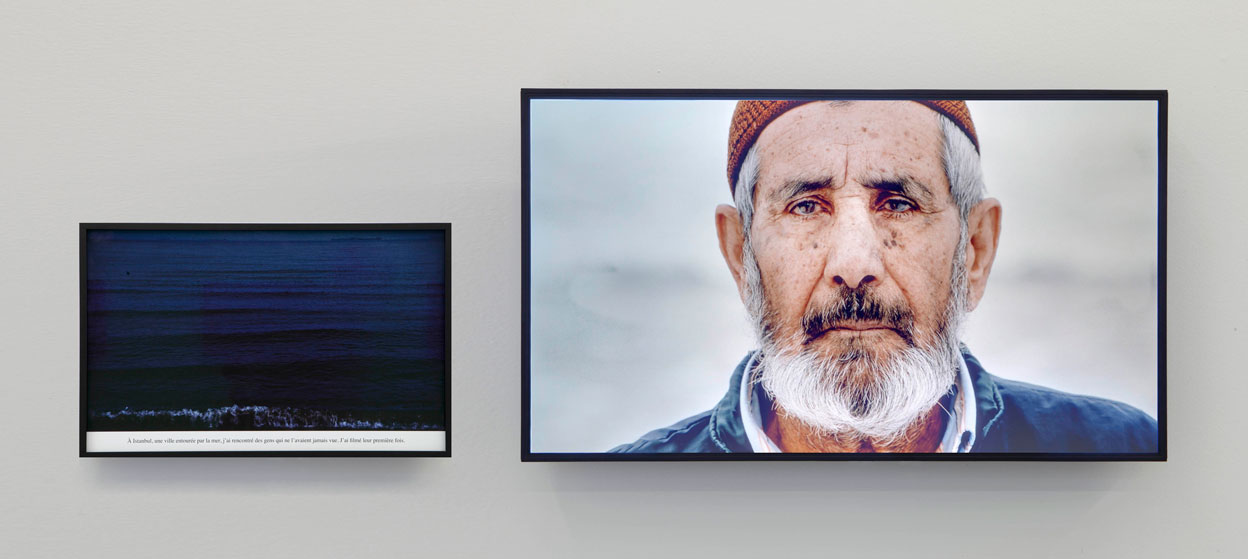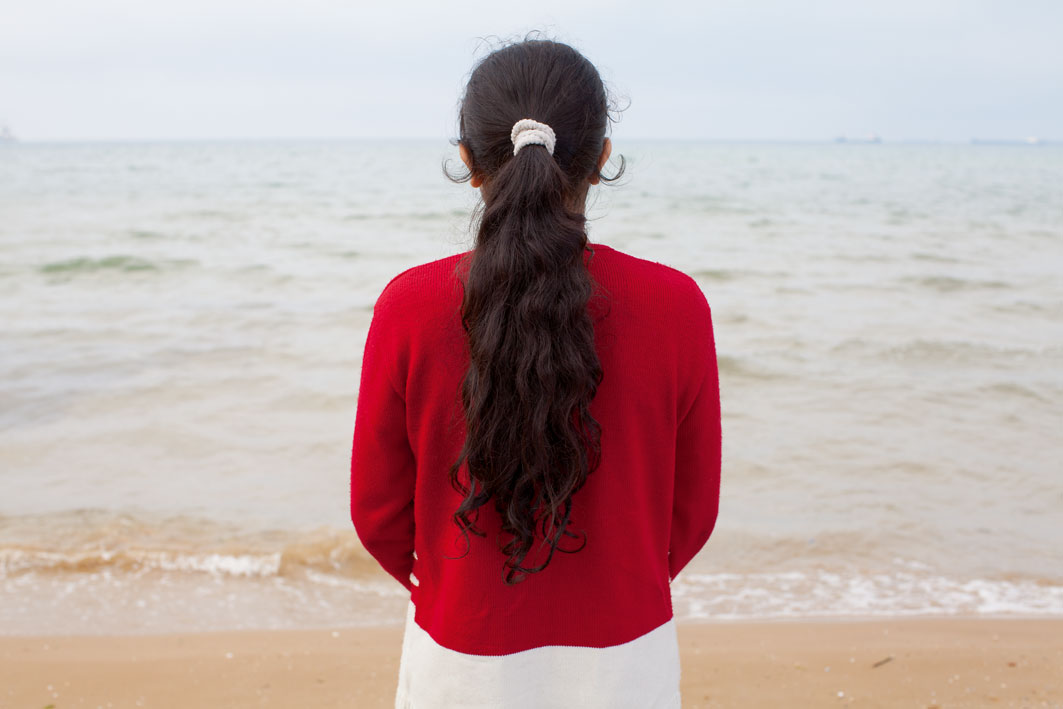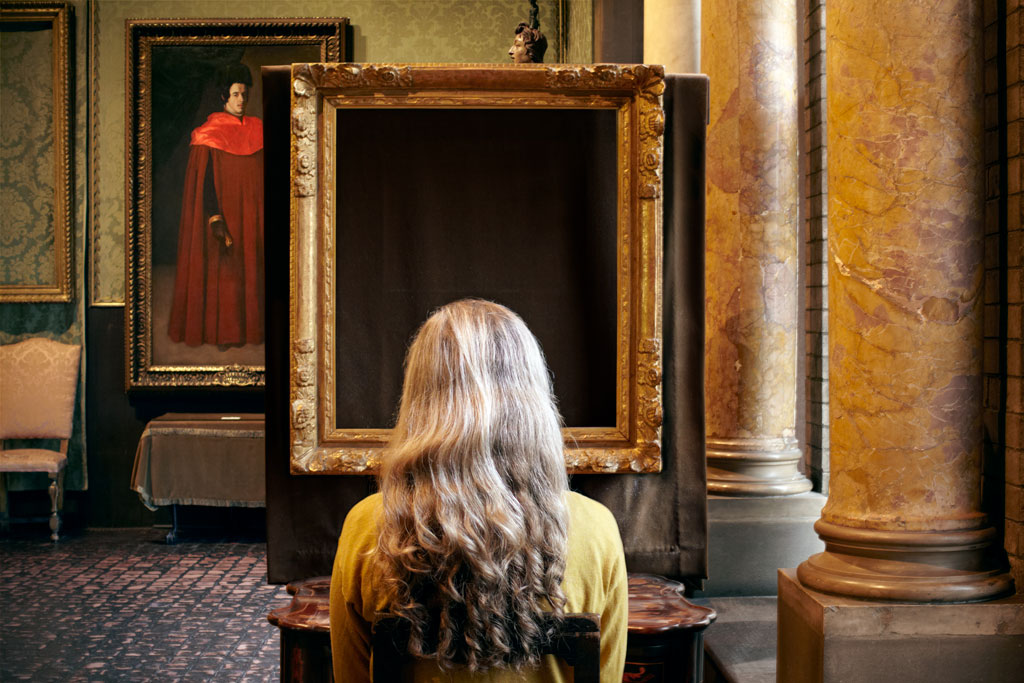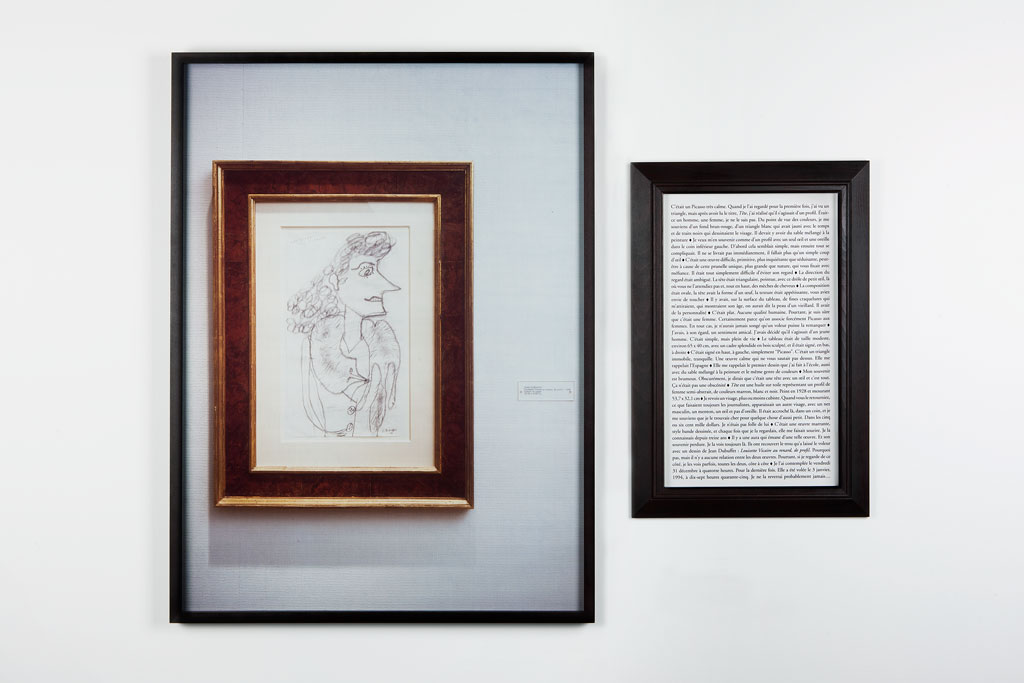ART-PRESENTATION: Sophie Calle-Regard incertain
 One of the foremost artists of our time, Sophie Calle tells stories through photographs and combines them with the written word. In her works, the French artist explores the relationship between memory and visual representation. What happens when images disappear or when seeing is no longer possible? Calle meticulously traces the last, missing or private photographs while reflecting on the relationship between text and image. There is a strong sense of intimacy that unfolds throughout her bodies of work and exerts an irresistible appeal.
One of the foremost artists of our time, Sophie Calle tells stories through photographs and combines them with the written word. In her works, the French artist explores the relationship between memory and visual representation. What happens when images disappear or when seeing is no longer possible? Calle meticulously traces the last, missing or private photographs while reflecting on the relationship between text and image. There is a strong sense of intimacy that unfolds throughout her bodies of work and exerts an irresistible appeal.
By Efi Michalarou
Photo: Kunstmuseum Thun Archive
She photographs and observes, films and writes, investigates and invents. One of the most important contemporary French artists, Sophie Calle deals with reality and fiction, the boundaries between presence and absence, and the parameters of self perception and how one is perceived by others. She was born in Paris in 1953, and lives and works in Malakoff, near Paris. The exhibition “Regard incertain”, consists of eight large groups of works. The title reflects Sophie Calle’s intention to question how unique a moment can be, how individual a glance, and how obvious a reality. ln her creations, photography and film are just as important as the text. ln minutely documented quests, she considers the parameters of artistic self-awareness and self-portrayal, her finger on the pulse of our times. The works are a prime example of this approach, and provide an insight into various aspects of the work of this French artist. Well-known works from the past ten years such as the video work “Voir la mer” (2011) are on display alongside early, groundbreaking works such as “Suite venitienne” with which Calle had her international breakthrough in 1980. ln her video work “Voίr la mer” (2011), Calle conveys the moment when people see the sea for the first time. She chose people who live in Istanbul, a city surrounded by the sea. For whatever the reason these people had never seen the sea, Sophie Calle invites them to do so. With their eyes covered, these people – men and women, young and old – are led down to the beach and filmed as they see the sea for the first time. What do they feel? We can only imagine, perhaps with the help of our own memories of seeing the sea for the first time, but with an inkling that this quiet moment may well change how they see the world. ln the groups “Que voyez-vous?” (2013), “Les tableaux dérobés” (1994-2013) and “Last seen” (1991), all of which refer to one of the world’s most spectacular art thefts*, Calle asks curators and supervisory staff about their memories of the stolen pictures. Ηοw do they deal with the void left behind after the theft? Here, as with the other groups of works, the relationship between text and image plays an important role. The texts accompanying Calle’s pictures, therefore, are never to be regarded as a supplement, but as a constituent part of the work. “La dernière image” (2010) does not just demonstrate Sophie Calle’s questioning of memory and absence as evoked through text and picture, but also her reflections on the nature of photography. She asks people who suddenly lost their sight about the last thing they saw. What evolves is a triangular relationship between the portrait of the person, the description of their memory of the last thing they saw, and a photograph which seems to represent that memory. But does the photograph really show what this person remembers? And how do we spectators perceive this link with the text? Lastly, “Suite venitienne” (1980) is one of Calle’s earliest key works. ln it she secretly follows a man (Henry Β.) she barely knows around Venice; she uses the numerous photographs she took, accompanied with diary-like texts, to describe not just the methods of her surveillance but also her own feelings. lt demonstrates the fusion of investigative methods, fictional constructs and scenes from real life, as well as the construction of the ego, that is so characteristic of her work.
*On18/3/1990, 13 works of art valued at a combined total of $500 million were stolen from the Isabella Stewart Gardner Museum in Boston. In the early hours, guards admitted two men posing as police officers responding to a disturbance call. Once inside, the thieves tied up the guards and over the next hour committed the largest-value recorded theft of private property in history. Despite efforts by the FBI and multiple probes around the world, no arrests have been made and no works have been recovered. The museum initially offered a reward of $5 million for information leading to the art’s recovery, but in 2017 this was temporarily doubled to $10 million, with an expiration date set to the end of the year. This was extended into 2018 following helpful tips from the public.
Info: Kunstmuseum Thun, Thunerhof, Hofstettenstrasse 14, Thun, Switzerland, Duration: 6/9-1/12/19, Days & Hours: Tue & Thu-Sun 10:00-17:00, Wed 10:00-19:00, www.kunstmuseumthun.ch

«In Istanbul, a city surrounded by the sea, I met people who had never seen it. I filmed their first time.»

On March 18, 1990, six paintings by Rembrandt, Flinck, Manet and Vermeer, five drawings by Degas, one vase, and one Napoleonic eagle were stolen from the Isabella Stewart Gardner Museum in Boston. The frames of the Rembrandt, Vermeer, and Flinck paintings were left behind. In 1994, after being restored, the empty frames were hung back in place, further emphasizing the painting’s absence. I asked the curators, guards, other staff members and visitors to tell me what they saw within these frames.

«In front of the space where they had last been seen, I asked curators, guards and other staff members as well as the owners to describe the missing works.»
«On January 3, 1994 a painting by Picasso, Head, was stolen at Richard Gray’s home, in Chicago. In front of the drawing by Jean Du buffet that took its place, I asked all the people who had seen the work to describe for me the missing work. On March 10, 1995, Head was found on the back seat of a station wagon curbed by police.»

«I went to Istanbul. I spoke to blind people, most of whom had lost their sight suddenly. I asked them to describe the last thing they saw.»
Right: Sophie Calle , lnfarctus silencieux, 2017 (serie des Histoires vraies) , © Sophie Calle/ ADAGP, Paris 2019 , Courtesy the Artist & Perrotin
